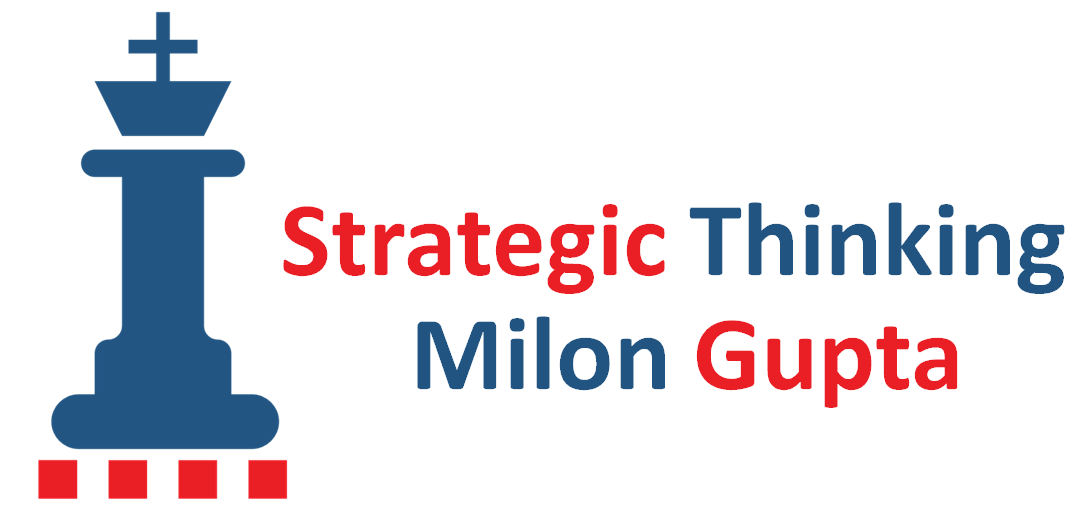For many businesses, the year 2015 was challenging. At first glance, the opportunities outweighed the threats. Cheap money and cheap oil stimulated the business of many companies. However, not every company was able to benefit from the opportunities.
 The year 2015 saw interesting examples of success and failure, which were significantly influenced by the quality of strategic management. While some executives were able to reap the fruits of their good strategic decisions, others had to suffer the consequences of bad strategic decisions in the past.
The year 2015 saw interesting examples of success and failure, which were significantly influenced by the quality of strategic management. While some executives were able to reap the fruits of their good strategic decisions, others had to suffer the consequences of bad strategic decisions in the past.
I picked three examples each for good and for bad strategic management in 2015, which could offer interesting insights for your business in 2016 and beyond.
In the first part, let us have a look at examples of good strategic management.
Good Strategic Management
Good strategic management starts at the top. It is, thus, no surprise that the three companies I selected each have CEOs with extraordinary strategic acumen.
Novo Nordisk
Danish multinational pharmaceutical company Novo Nordisk has a simple and, so far, successful strategy: 85% of Novo Nordisk’s business is based on drugs and devices for diabetes treatment. The decision to focus on diabetes was taken under Lars Rebien Sørensen, who has been the company’s CEO since 2000.
The diabetes-focused strategy paid off – Novo Nordisk has a market capitalization of 136 billion euro and is ranked number 46 in terms of market value on the Forbes list. In 2015, Harvard Business Review selected Mr Sørensen as Best-Performing CEO of the Year, based on his enduring success.
Clear strategic focus and excellent strategy execution make Novo Nordisk a role model of strategic management. However, the diabetes-focused strategy may not work forever in view of new emerging treatments that could render Novo Nordisk’s products obsolete one day.
Pfizer
In contrast to Novo Nordisk, US-based pharmaceutical company Pfizer has a very diversified product portfolio. Pfizer has expanded this portfolio in recent years through skillful, yet not always successful acquisitions. In 2014, the attempted acquisition of UK-based AstraZeneca was rejected by the AstraZeneca board. In 2015, Pfizer went on a shopping spree again, which might turn out more successful.
In February 2015, Pfizer and Hospira agreed that Pfizer would acquire Hospira for approximately 14 billion euro. Hospira is the world’s largest producer of generic injectable pharmaceuticals. The deal gives Pfizer access to Hospira’s portfolio of generic acute-care and oncology injectables, biosimilars, and integrated infusion therapy and medication management products. According to Ian Read, Pfizer’s Chairman and CEO, Hospira’s business aligns well with Pfizer’s pharmaceutical business.
And later that year Mr Read presented an even bigger deal: on 23 November 2015, Pfizer and Allergan, formerly known as Actavis, announced their intention to merge for an approximate sum of 160 billion US dollars, making it the largest pharmaceutical deal ever, and the third largest corporate merger in history. As part of the deal, Pfizer’s CEO, Ian Read, would become CEO and chairman of the new company, to be called “Pfizer, plc”, while Allergan’s CEO, Brent Saunders, would becoming president and chief operating officer.
The Allergan deal is expected to be completed in the second half of 2016. However, there are still some caveats, as the deal is subject to US and EU approval, approval from both sets of shareholders, and the completion of Allergan’s divestiture of its generics division to Teva Pharmaceuticals.
Pfizer’s strategic acquisition moves in 2015 deserve praise for their calculated risk-taking and could result in catapulting Pfizer to the top in the pharma business. That said, a failure of the Allergan deal is still possible and could seriously hurt Pfizer. Thus, Mr Read’s courageous strategic management could finally still result in failure. However, good strategic management involves a certain degree of risk-taking and is no guarantee for success.
Slack Technologies
Slack Technologies is a software startup founded in 2009 under the name Tiny Speck, which provides an innovative cloud-based team collaboration tool called Slack. Slack Technologies has become the record-holder for fastest achieving a billion-dollar valuation – by the end of 2015 it had a 2.8 billion dollar valuation. Ten thousands of teams are already using Slack, and the user base is fast-growing. Due to its stunning growth and success, Slack was awarded the title “Company of the Year” by Inc. magazine.
Slack Technologies CEO Stewart Butterfield, who also co-founded Flickr, has taken Slack from idea to fast-growing software company in just over three years. The simple, but hard-to-copy recipe behind Slack’s success is an easy-to-use product that fulfills the growing need for team collaboration. According to Inc., “Slack is the exemplar of a trend analysts have dubbed the consumerization of enterprise technology.”
Like similar products, Slack is based on a Freemium model with free basic services and special enterprise services at a fee. What makes Slack’s business strategy special is that their marketing and sales are entirely based on word of mouth. It works because of a product that is well designed and very easy to use. Somehow in the process, Slack turned from user-friendly to user-adored, the dynamics of which are similar to the success of the iPhone, yet hard to copy.
Despite its huge startup success, it is still possible for Slack to fail later. However, up to 2015 it definitely has been a role model for strategic management of a startup.
Read in part 2 of “Success and Failure of Strategic Management in 2015” about examples of bad strategic management.
